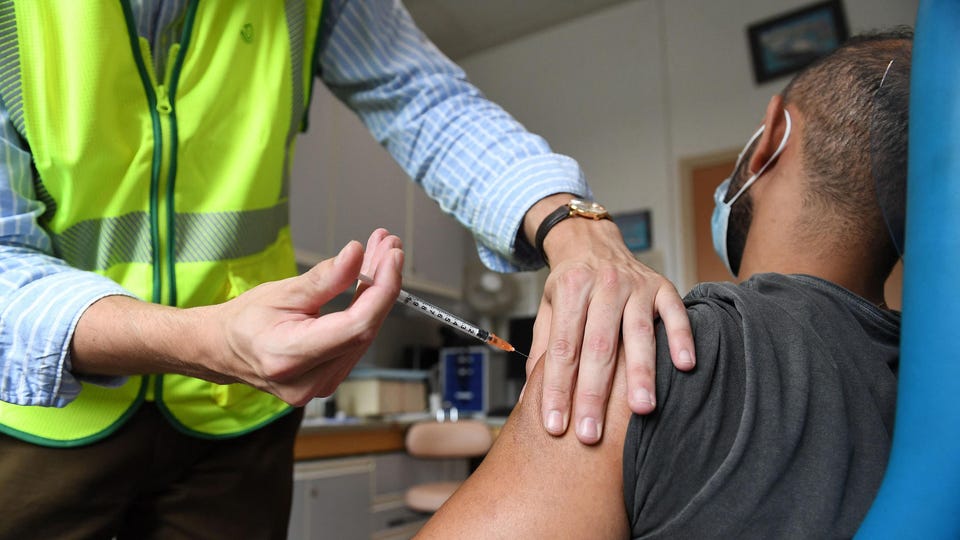Breaking Business Monkeypox: CDC ‘Cautiously Optimistic’ About Falling Rates Of Infections—But Racial Disparities Spark Concern Madeline Halpert Forbes Staff New! Follow this author to improve your content experience. Got it! Aug 26, 2022, 04:17pm EDT | Share to Facebook Share to Twitter Share to Linkedin Topline Centers for Disease Control and Prevention Director Rochelle Walensky said she felt “cautiously optimistic” about the monkeypox outbreak in the U. S.
, with new infection rates declining as the White House ramps up vaccine supply, though officials said not enough vaccine shots are going to people of color who have been disproportionately affected by the outbreak. A man receives a dose of the monkeypox vaccine. POOL/AFP via Getty Images Key Facts Black people comprised one-third of monkeypox infections, according to the CDC, but only account for 10% of those who have received monkeypox vaccinations, officials said Friday.
Hispanic and Latino people also account for almost a third of cases, but make up 22% of vaccinations, while white people comprise 30% of monkeypox infections and 47% of vaccinations, according to CDC data from 17 states and two cities. The CDC is “taking action right away” to address these disparities, Walensky said, with officials adding the federal government is working with local jurisdictions to provide educational materials and promote more equitable access to monkeypox vaccinations. Walensky also noted monkeypox cases have started to fall globally , with several hard-hit jurisdictions in the U.
S. , including New York, Chicago and San Francisco, starting to report a “downward trend” in cases, she said. This is due in large part to vaccines as well as behavioral changes, Walensky said, citing a new report from the American Men’s Internet Survey released by the CDC on Friday that found roughly 50% of survey participants—men who have sex with men, who comprise the vast majority of monkeypox cases—reported decreasing their number of sexual partners and reducing their number of one-time sexual encounters to avoid infection.
Key Background Monkeypox can result in painful lesions, chills, fever, headaches and other symptoms. Following a steep climb in cases and a vaccine shortage, the White House declared monkeypox a public health emergency on August 4 to help streamline the government’s response, increase vaccine availability and free up funding for drug and vaccine development. The Food and Drug Administration has also changed its vaccine strategy to ensure more doses reach those at risk: It issued an emergency use authorization earlier this month allowing healthcare workers to administer one-fifth of a standard Jynneos vaccine dose—the only shot specifically approved by the FDA to protect against monkeypox—intradermally, or into the skin, instead of subcutaneously, or into the fat underneath the skin.
Officials said Friday the move has helped shore up vaccine supply. Monkeypox infections in the U. S.
have continued to climb each week, but the rate of increase has fallen in recent weeks, with 2,362 new cases reported the week ending in August 24, a slight decline from the 2,541 cases the week before, according to the CDC. Further Reading US data reveals racial gaps in monkeypox vaccinations (Associated Press) Global Monkeypox Cases Fall 21%—Though U. S.
Still Tops World Case Count (Forbes) Officials ‘cautiously optimistic’ about falling monkeypox cases (Washington Post) Check out my website . Send me a secure tip . Madeline Halpert Editorial Standards Print Reprints & Permissions.
From: forbes
URL: https://www.forbes.com/sites/madelinehalpert/2022/08/26/monkeypox-cdc-cautiously-optimistic-about-falling-rates-of-infections-but-racial-disparities-spark-concern/



